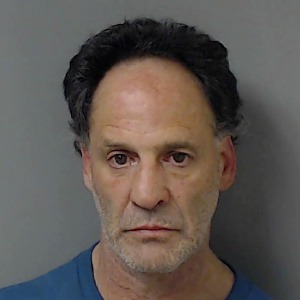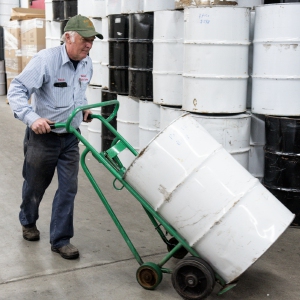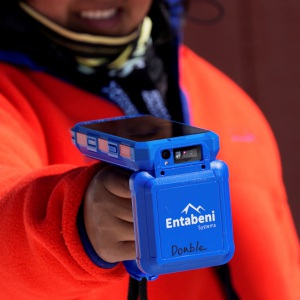Drone purchase to aid Sullivan County police in emergencies
| Published: 09-11-2022 8:39 PM |
NEWPORT — About once a week since May, the Sullivan County Sheriff’s Department has assisted area emergency responders using drones for search and rescue operations and other circumstances.
The department purchased the drones last December and put them into use once pilot certification from the Federal Aviation Administration was obtained for three department members.
“This is budding technology that is making waves across the country,” Jeremy Wilson, the department’s chief deputy, said while demonstrating and explaining the drones’ capabilities. “The technology is moving so fast and no one in our area has it but everyone should have it.”
Drones provide faster, safer and easier access to areas that people take longer to reach and at a greater risk.
One of the first calls for service was for a person with Alzheimer’s disease in Grantham who had walked away from his home. Wilson said they were assigned to search a swampy area, which did not turn up the individual who eventually came home on his own.
“A lot of people would say that was not a success because you did not find him,” Wilson said. “But what we did do, we were able to say he is not in the pond or swamp. You are eliminating areas faster than people walking can do, so this speeds things up. It is not only what you find that makes a mission a success but sometimes it is what you didn’t find.”
The drone can not only search faster but also in areas that are difficult to access, such as swamps and steep hillsides. A drone may not eliminate the use of “line searches” (20 or 30 people) but it will aid in that, Wilson said.
“The hope is in those scenarios we can speed things up enough to save lives,” Wilson said.
Article continues after...
Yesterday's Most Read Articles
 Upper Valley residents turn out in droves for protests against federal policies and cuts
Upper Valley residents turn out in droves for protests against federal policies and cuts
 Kenyon: DH CEO asserts decision to close infertility program was ‘thoughtfully evaluated’
Kenyon: DH CEO asserts decision to close infertility program was ‘thoughtfully evaluated’
 A Look Back: Catamount Brewing remembered as ‘a pioneering kind of venture’
A Look Back: Catamount Brewing remembered as ‘a pioneering kind of venture’
 High school soccer: As Grabill heads to Sunapee, Richardson takes over Hanover vacancy
High school soccer: As Grabill heads to Sunapee, Richardson takes over Hanover vacancy
 NH lawmakers want to study the possibility of leaving New England’s electricity system
NH lawmakers want to study the possibility of leaving New England’s electricity system
 ‘The revenue just isn’t there’: House Finance Committee slashes $271M in jobs, services from Ayotte’s budget proposal
‘The revenue just isn’t there’: House Finance Committee slashes $271M in jobs, services from Ayotte’s budget proposal
In 2019 Wilson’s interest in drones was piqued after reading a lot about them in law enforcement publications. He noted that while several communities in New Hampshire use them there were not many on the western side of the state.
Sullivan County Sheriff John Simonds fully supported the idea but with no history of use in the department, he could not justify adding the expense to the county budget until they proved themselves. COVID would delay the project but Wilson eventually raised about $38,000 from local businesses, charitable organizations and citizens and has spent $29,000 for two drones and related equipment.
Wilson, Sgt. Ethan Yazinski and Deputy Heather Shea-Clark earned their certification earlier this year to fly the drones and Wilson said he would like to certify three more.
During the demonstration at the county complex in Unity last week, Wilson held the drone in one hand and unfolded the four-propeller attachment as he pointed out some of the features. The battery pack lasts about 30 minutes but the department has several packs and can recharge them at the scene of the incident. The drones fly up to 44 miles per hour; have a beacon for night use, a loudspeaker attachment, a thermal imaging camera and multiple sensors.
At a recent fire in Claremont, a drone was used to look for hot spots in the building and the next day it assisted the state fire marshal in the investigation into the cause and place of origin.
Messages can be programmed into the loudspeaker and along with the beacon, a drone can guide a lost hiker to safety. Other uses can include assessing flood damage or responses in public health emergencies.
Wilson emphasized that the drones are not used for criminal investigations or random surveillance.
“We are not just going out over Claremont on Pleasant Street on a Friday night and fly(ing) over to watch for bad behavior,” Wilson said. “Nor can we fly over neighborhoods at 2 in the morning looking for burglars.”
If the drone were to be used as part of a criminal investigation, Wilson said a search warrant is needed and must be approved by a judge. Training flights are not done in populated areas either.
Wilson said the department has conducted public outreach in an effort to quell concerns about privacy issues related to drones.
“Now citizens are more accepting of drones,” he said.
An operator flies the drone using a control that is connected by cable to a large monitor that displays what the drone has captured.
“It took a while to feel comfortable with it,” Wilson said, as the drone hovered about 12 feet in the air. There is much more to learning to operate the drones legally as the FAA has strict rules.
For example, the department needs FAA waivers if it wants to operate outside of the established rules, such as maximum height of 400 feet or always maintaining visual contact with the drone.
“There is a lot to it; way more than I thought when I first started,” Wilson said.
The drone does have operating limitations. It cannot fly in rain or snow, nor can it fly when temperatures fall below 14 degrees Fahrenheit. But those are minor compared to its advantages, Wilson said.
Drones can be a benefit to smaller Sullivan County communities with volunteer or part-time emergency services that do not have the resources in their budgets, Wilson said.
“Whatever we can do to be helpful in an emergency scenario, we’ll help.”
Patrick O'Grady can be reached at pogclmt@gmail.com.
]]>






 Hartford man dies while incarcerated
Hartford man dies while incarcerated  Hartford hires its first housing and development specialist
Hartford hires its first housing and development specialist So far exempt from tariffs, maple industry still feels their effects
So far exempt from tariffs, maple industry still feels their effects A New Hampshire ski resort bets on tech to compete with industry giants
A New Hampshire ski resort bets on tech to compete with industry giants
